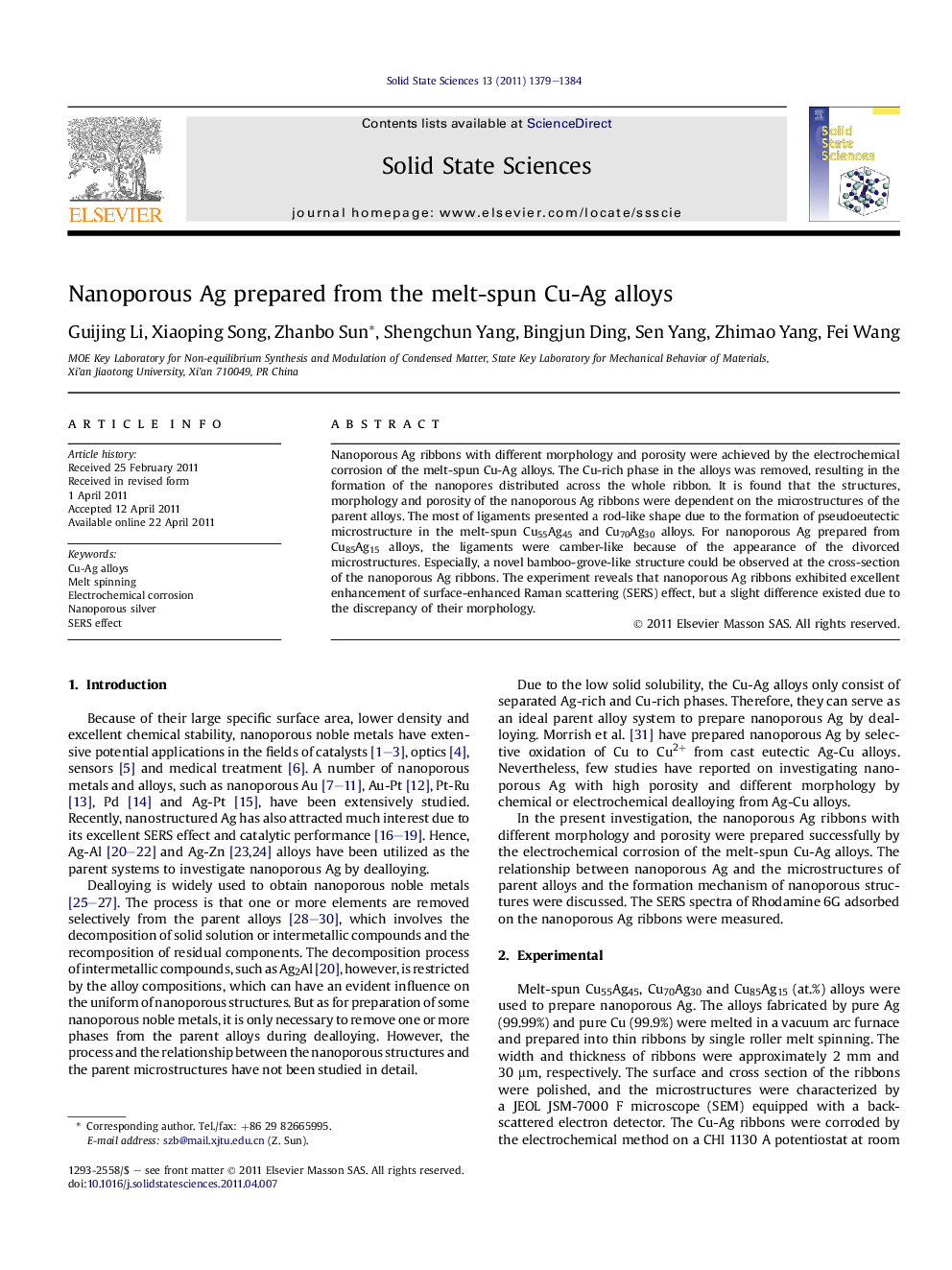| Article ID | Journal | Published Year | Pages | File Type |
|---|---|---|---|---|
| 1505023 | Solid State Sciences | 2011 | 6 Pages |
Nanoporous Ag ribbons with different morphology and porosity were achieved by the electrochemical corrosion of the melt-spun Cu-Ag alloys. The Cu-rich phase in the alloys was removed, resulting in the formation of the nanopores distributed across the whole ribbon. It is found that the structures, morphology and porosity of the nanoporous Ag ribbons were dependent on the microstructures of the parent alloys. The most of ligaments presented a rod-like shape due to the formation of pseudoeutectic microstructure in the melt-spun Cu55Ag45 and Cu70Ag30 alloys. For nanoporous Ag prepared from Cu85Ag15 alloys, the ligaments were camber-like because of the appearance of the divorced microstructures. Especially, a novel bamboo-grove-like structure could be observed at the cross-section of the nanoporous Ag ribbons. The experiment reveals that nanoporous Ag ribbons exhibited excellent enhancement of surface-enhanced Raman scattering (SERS) effect, but a slight difference existed due to the discrepancy of their morphology.
Graphical abstractFigure optionsDownload full-size imageDownload as PowerPoint slideHighlights► We prepared nanoporous Ag by the selective corrosion of melt-spun Cu-Ag alloys. ► The relationship between nanoporous Ag and the parent microstructures was discussed. ► The morphology and porosity were dependent on the microstructures of parent alloys. ► The nanoporous Ag exhibited excellent enhancement of Raman scattering effect.
